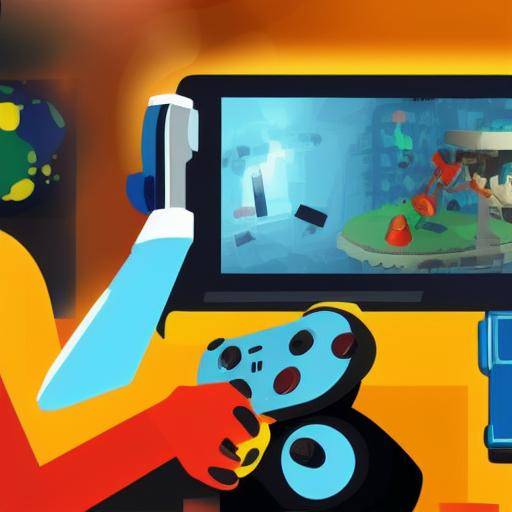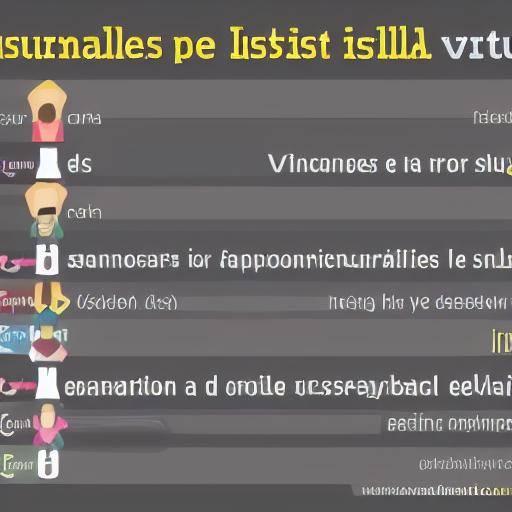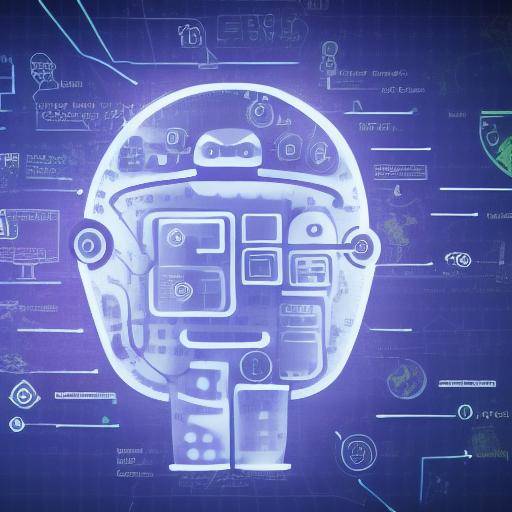
Introduction
Educational video games have gained popularity in recent years as an innovative tool for learning. In particular, its role in promoting learning in STEM disciplines (Cience, Technology, Engineering and Mathematics) has been the subject of intense debate and analysis. In this article, we will thoroughly explore the impact and relevance of educational video games in the context of STEM learning. From its historical evolution to future trends, this comprehensive analysis will provide a clear and detailed view of the topic, highlighting its importance in the current educational landscape.
History and Background
Educational video games have their roots in the 1970s, when the first attempts to combine entertainment with learning emerged. With the advancement of technology, these games evolved to cover a wide range of educational issues, including the promotion of STEM skills. Over the years, there have been significant milestones in the development of these video games, from the introduction of educational video consoles to the proliferation of interactive applications designed for STEM learning. In addition, various studies and success stories have supported their effectiveness in increasing participation and academic performance in these areas.
Analysis in Deep
The impact of educational video games on STEM learning extends beyond mere transmission of knowledge. These games have demonstrated their ability to build cognitive skills, such as critical thinking, problem solving and creativity. They have also facilitated a more practical and experiential approach to learning, which is particularly beneficial for STEM students. Despite their many benefits, educational video games also face challenges in terms of accessibility, equity and quality control. It is crucial to address these concerns while promoting their effective integration into formal and informal educational settings.
Comprehensive review
The practical application of educational videogames in STEM learning has generated a significant corpus of good practices and innovative approaches. Current research and case analysis have highlighted effective strategies for the successful implementation of these games in diverse educational environments. The importance of solid pedagogical orientation and adaptation to individual learning styles are highlighted as critical factors to maximize the benefits of educational video games in STEM learning. In addition, the role of educators and developers in creating meaningful learning experiences through these games is fundamental.
Comparative analysis
Compare and contrast the role of educational video games, STEM learning. Then include detailed examples and scenarios to highlight similarities, differences and possible synergies among these key elements.
Practical Tips and Accessible Strategies
In order to optimize the educational potential of video games in STEM learning, educators and parents are recommended to explore effective strategies to integrate educational games into learning environments. Some tactics include careful selection of games that align with specific educational objectives, active monitoring of student progress and adapting the gaming experience to ensure a balance between fun and effective learning.
Conclusions
In short, educational video games play a crucial role in promoting STEM learning. Their ability to engage and motivate students, as well as to cultivate cognitive and practical skills, places them as a valuable tool in the current educational landscape. As they continue to evolve and be integrated into formal and informal learning environments, their positive impact on STEM education will continue to grow. It is crucial to recognize their potential and address their challenges proactively to optimize their contribution to the academic and professional development of students.
Frequently asked questions
**1. What is the impact of educational video games on STEM learning?**Educational video games offer an immersive and practical way to address STEM concepts, which can increase the understanding and retention of information. In addition, they promote problem solving and critical thinking skills, which are fundamental in the STEM field.
**2. How can educators effectively integrate educational video games into the classroom?**Educators can select educational video games that are aligned with specific learning objectives, incorporate games as complementary tools to traditional instruction and evaluate the progress of students through activities in the game.
**3. What are the challenges associated with educational video games in STEM learning?**Some challenges include ensuring fair accessibility to games, maintaining a balance between fun and effective learning, and ensuring the quality and educational relevance of selected games.
**4. How can parents support the use of educational video games at home for STEM learning?**Parents can play an active role in selecting appropriate educational video games, setting appropriate play time limits and participating in play-based activities to enrich their children's learning experience.
**5. What is the future of educational video games in the field of STEM education?**Educational video games are expected to continue to evolve with technological advances such as virtual reality and artificial intelligence, which could further expand their impact on STEM teaching and learning.
**6. What are some recommendations for the selection of quality educational video games?**It is advisable to search for games that have a solid pedagogical basis, evaluate the relevance of the educational content offered and consider the opinions of other educators and parents who have used the games with their students.
In conclusion, educational video games play an integral role in the promotion of STEM learning, offering an enveloping and effective learning experience for students. In tackling challenges and taking advantage of best practices, we can maximize their potential to enrich education in STEM disciplines and prepare future generations to face the challenges of the modern world.






















































